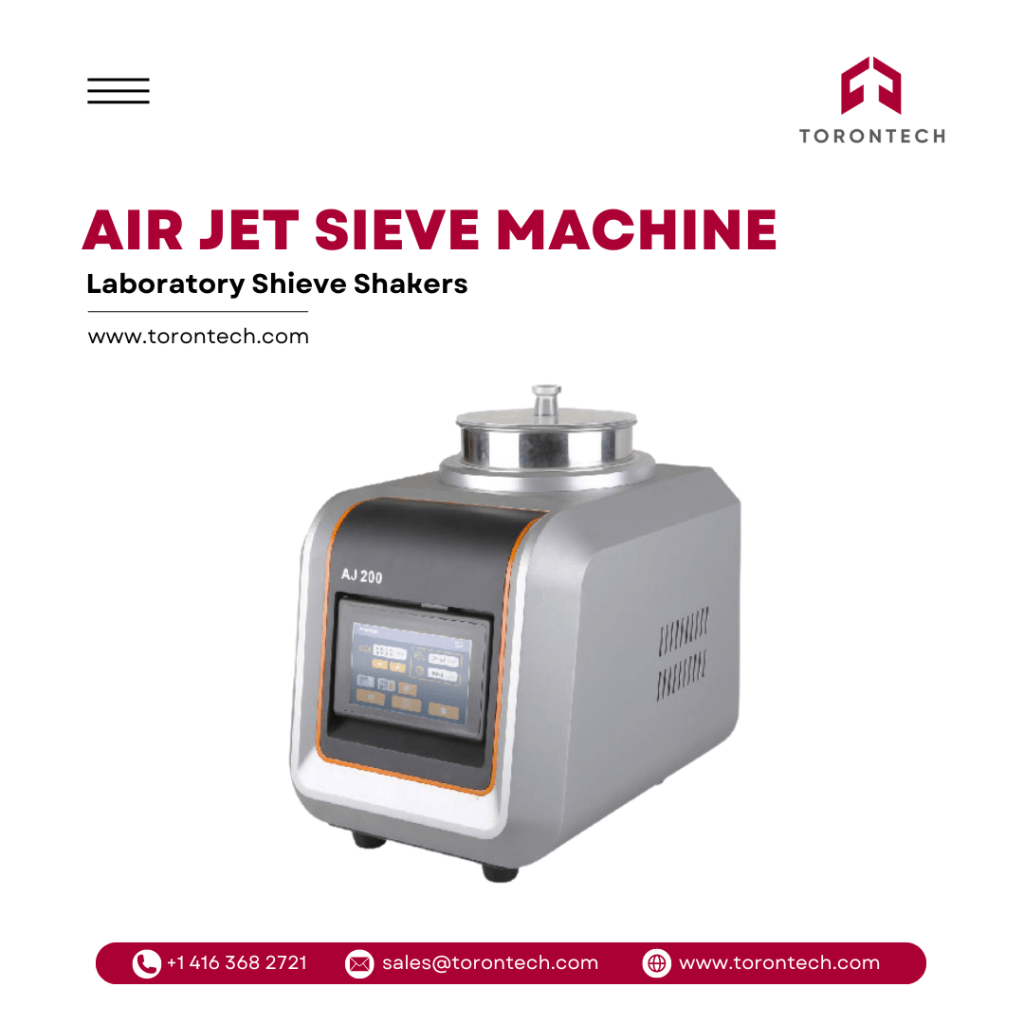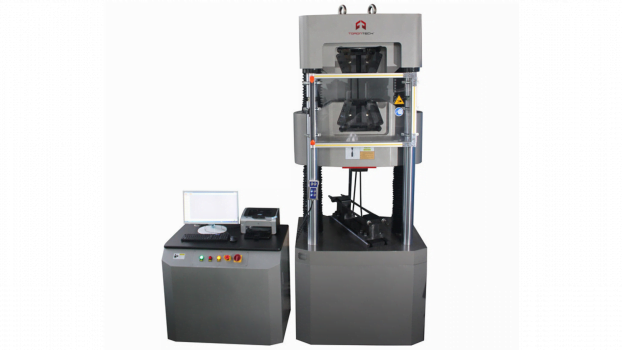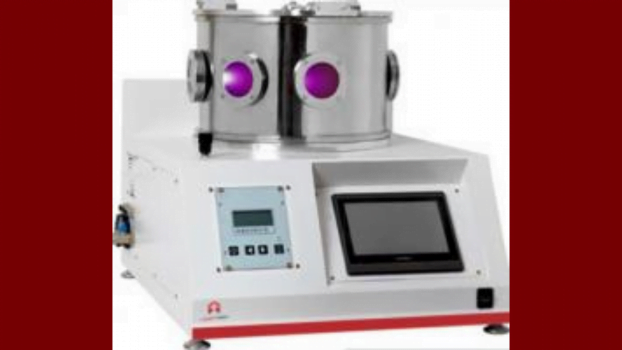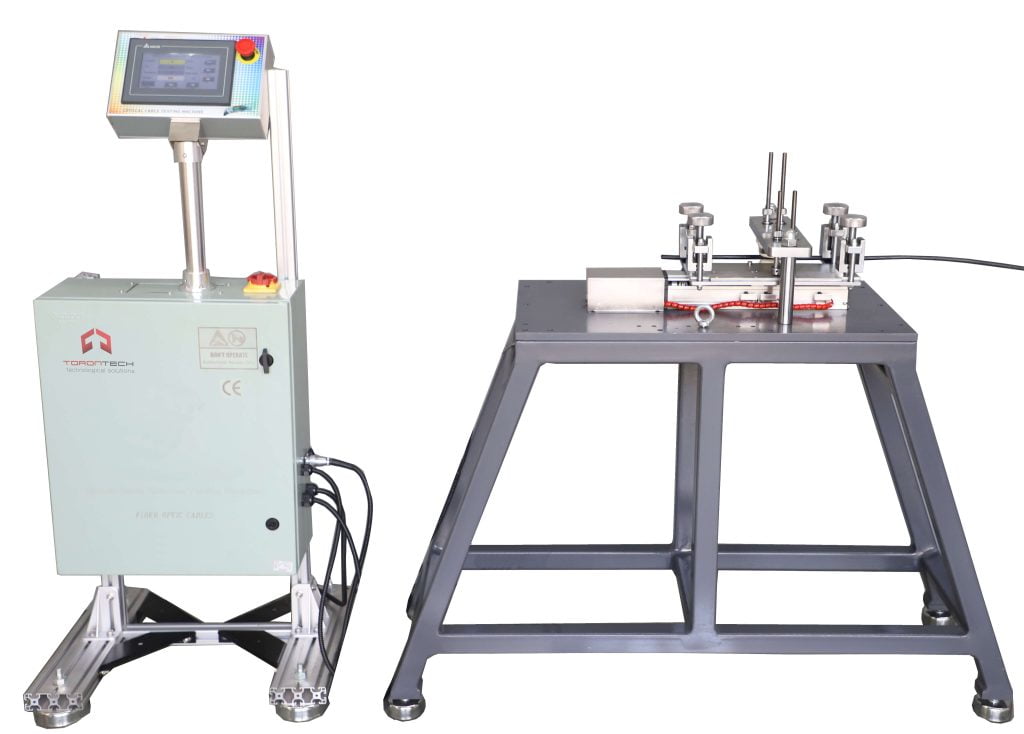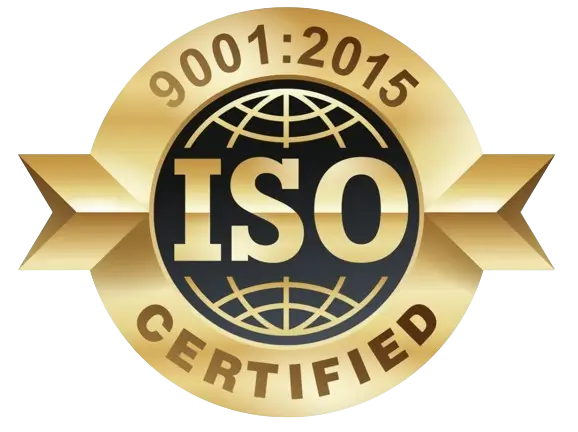Air Jet Sieve machine stands out as an indispensable tool for precise particle size analysis, offering top-notch solutions for particle separation and deagglomeration. These advanced machines have transformed the field by utilizing controlled air jets to achieve unparalleled accuracy.
With their innovative design and cutting-edge functionality, Air Jet Sieve Machines have become the preferred solution for scientists, researchers, and engineers requiring reliable particle size determination.
In this blog post posts, we will explore their working principles, delve into real-world application examples, unveil additional advantages, and scrutinize the specific features that render these machines indispensable for achieving precise particle size analysis.
What is an Air Jet Sieving Machine?
The Air Jet Sieving Machine is a laboratory instrument designed specifically for sieving powder and dry grain products. The machine is suitable for sieving materials with particle sizes between 5 µm to 5mm. It is a non-mechanical sieving method that utilizes the principle of air jet sieve to separate particles based on their size and grading.
Unlike traditional sieving techniques such as vibrational, horizontal, or tap sieving, air jet sieving relies on the movement of particles through a sieve mesh using streams of air. The machine generates controlled air jets that propel the particles through the sieve, facilitating separation based on size.
By utilizing air jets instead of mechanical motion, air jet sieving offers distinct advantages. It eliminates the risk of sample contamination or damage from mechanical vibrations, ensuring accurate and reliable results. It also enables efficient deagglomeration of particles and purifies the sieve mesh during the sieving process.
The air jet sieving method is particularly suitable for fine powders and granular materials. It provides a non-invasive way to analyze particle size distribution without subjecting the sample to harsh mechanical forces. The air jet sieve machine offers a precise and efficient solution for particle size analysis in various laboratory applications.
This machine offers several advantages over traditional sieving methods. It provides fast and efficient sieving, allowing for high sample throughput. It also eliminates the need for manual shaking or tapping of the sieve, reducing operator fatigue and ensuring consistent results. Additionally, the machine can be equipped with various sieve sizes to accommodate different particle size ranges.
How Does Air Jet Sieving Work?
Air Jet Sieving machines employ a unique working principle to accurately separate particles based on their size. By utilizing a strong airflow generated through a vacuum cleaner or cyclone system, this non-mechanical sieving method ensures precise results. The process involves several key steps:
1. Connection to a Vacuum Cleaner
The Air Jet Sieve machine is connected to a vacuum cleaner or a cyclone system. This connection creates a negative pressure that generates a strong airflow.
2. Airflow and Nozzle
The machine is equipped with a rotating slotted nozzle positioned beneath the sieve. The negative pressure from the vacuum cleaner generates a powerful jet of air directed onto the sample particles on the sieve mesh through the slotted nozzle.
3. Particle Dispersal
The air jet from the nozzle disperses the particles on the sieve, ensuring that they are evenly distributed. This helps to prevent particle clumping or agglomeration, ensuring accurate sieving results.
4. Deagglomeration and Purification
The strong airflow created by the vacuum cleaner or cyclone system helps deagglomerate the particles. It also serves to continuously purge the sieve mesh, removing any trapped particles or debris that may interfere with the sieving process.
5. Separation of Fine Particles
As the air jet passes through the sieve mesh, particles smaller than the mesh size are transported by the backflow of the air. These finer particles are suctioned away by the vacuum cleaner or directed to the cyclone system, effectively separating them from the desired particle fraction.
6. Collection
The separated fine particles are collected in the cyclone or vacuum cleaner, while the retained particles on the sieve remain for further analysis or disposal.
By utilizing the negative pressure generated by the vacuum cleaner or cyclone system, the Air Jet Sieving machine achieves efficient particle separation, deagglomeration, and purification of the sieve mesh. This working principle ensures reliable and accurate sieving results while maintaining the integrity of the sample.
Applications of Air Jet Sieving in Various Fields
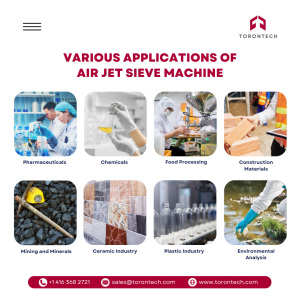
Air jet sieving machines find application in various fields where particle size analysis and grading are crucial for quality control, research, and development. Here are some examples of their applications
1. Pharmaceuticals
Air Jet Sieve is used to analyze the particle size distribution of powders, granules, and active pharmaceutical ingredients (APIs). It helps ensure consistent drug performance, optimize formulation processes, and meet regulatory requirements.
2. Chemicals
In the chemical industry, this machine is employed to assess the particle size of powders and granules used in the production of chemicals. It aids in optimizing processes, controlling product quality, and determining the suitability of raw materials.
3. Food Processing
Air jet sieving is utilized in the food industry for assessing the particle size distribution of ingredients such as flour, sugars, spices, and additives. It helps ensure consistent texture, taste, and quality of food products.
4. Construction Materials
Particle size analysis is crucial in the construction industry for materials like cement, sand, and aggregates. Air jet sieving is employed to determine the particle size distribution and grading of these materials to ensure the desired properties and performance of concrete, asphalt, and other construction products.
5. Mining and Minerals
This instrument is used in the mining and minerals industry to analyze the particle size distribution of ores, minerals, and mineral powders. It helps optimize mineral processing operations, assess product quality, and control particle size for specific applications.
6. Ceramic Industry
Air Jet Sieving plays a vital role in the ceramic industry for assessing the particle size distribution of ceramic powders, clays, and raw materials. By controlling the particle size, ceramic manufacturers can optimize properties like workability, shrinkage, density, and firing characteristics. This helps in producing high-quality ceramic products with consistent performance.
7. Plastic Industry
In the plastic industry, Air Jet Sieve is used to analyze the particle size of plastic resins, powders, and additives. Controlling particle size is crucial as it impacts properties such as flowability, moldability, strength, surface finish, and dispersion characteristics of additives. By optimizing the particle size distribution, manufacturers can ensure consistent product quality and process efficiency in plastic production.
8. Environmental Analysis
This machine can be applied in environmental analysis to determine the particle size distribution of soil samples, sediments, and particulate matter. It aids in studying soil fertility, assessing pollutant distribution, and understanding erosion processes.
In all these industries, Air Jet Sieving’s versatility and accuracy make it an invaluable tool for particle size analysis in numerous industries, enabling manufacturers to optimize their processes, improve product quality, and meet specific performance requirements.
Advantages of Air Jet Sieving Machine
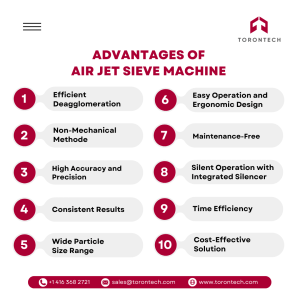
Air jet sieving machines offer several advantages over traditional mechanical sieving methods. Here are some of the key advantages.
1. Efficient Deagglomeration
The strong airflow generated by the vacuum cleaner or cyclone system in an Air Jet Sieving machine aids in deagglomerating particles. It helps break apart particle clusters or agglomerates, ensuring individual particles are dispersed and available for accurate sizing analysis.
2. Non-Mechanical Method
Unlike mechanical sieving methods requiring mechanical shaking or tapping, air jet sieve is a non-mechanical technique. This eliminates the need for moving parts, reducing the risk of mechanical wear and tear, and ensuring consistent and reliable results over time. It also minimizes operator fatigue and the potential for human error.
3. High Accuracy and Precision
Air Jet Sieving machines provide high accuracy and precision in particle size analysis. The controlled air jets ensure uniform dispersion of particles on the sieve, enabling reliable and consistent results. This is particularly important for applications where precise particle size distribution is critical.
4. Consistent Results
The use of a controlled air stream in air jet sieving provides consistent and reproducible results. The air jet creates a uniform flow of particles through the sieve openings, leading to more accurate particle size analysis. The technique also minimizes particle agglomeration or clogging, resulting in reliable and representative data.
5. Wide Particle Size Range
Air Jet Sieve machines are capable of handling a wide range of particle sizes, from fine powders to coarse granular materials. They offer versatility in analyzing different types of materials across various industries, making them suitable for diverse applications.
6. Easy Operation and Ergonomic Design
This machine is designed with user convenience in mind. They often feature intuitive controls, clear display panels, and ergonomic designs that facilitate easy operation. Operators can quickly learn to use the machine effectively, reducing the learning curve and enhancing productivity in the laboratory.
7. Maintenance-Free
Air Jet Sieving machines are known for their low maintenance requirements. They are designed to be durable and reliable, minimizing the need for frequent repairs or part replacements. This allows users to focus on their analysis without interruptions or excessive maintenance tasks.
8. Silent Operation with Integrated Silencer
Air Jet Sieve machines are engineered to operate quietly, thanks to the integration of silencers. The silencer effectively reduces noise levels, creating a more comfortable and peaceful working environment in the laboratory. The reduced noise also helps prevent disturbances and promotes better concentration during sieving operations.
9. Time Efficiency
This instrument typically offers faster sieving times compared to traditional mechanical sieving methods. The efficient dispersal of particles and the continuous purging of the sieve mesh contribute to quicker analysis, saving time in the laboratory.
10. Cost-Effective Solution
When considering the combination of time efficiency, reduced labor costs, low maintenance requirements, elimination of consumables, and accurate results, Air Jet Sieving machines offer a cost-effective solution for particle size analysis. The initial investment in the machine is often offset by the long-term cost savings achieved through improved efficiency and productivity.
These advantages make air jet sieving machines a valuable tool for particle size analysis in industries such as pharmaceuticals, chemicals, food processing, and construction, where accurate and efficient sieving is essential for quality control and product development.
Key Features of Air Jet Sieving Machine
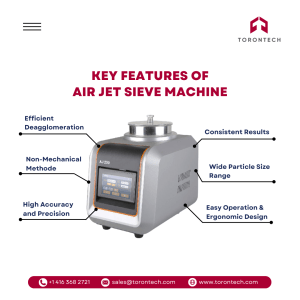
Air jet sieving machines typically possess a range of features that enhance their functionality and usability. Here are some common features found in air jet sieve machines.
1. Air Jetting Technology
The air jet sieving machine utilizes advanced air jetting technology, which helps to reduce agglomeration and ensures effective separation of particles. The controlled air stream helps to disperse and fluidize the sample, preventing particles from clumping together and facilitating accurate sieving results.
2. Specially Designed Nozzle
The machine is equipped with a specially designed rotating slotted nozzle that ensures consistent and uniform distribution of the air jet. This nozzle design optimizes the sieving process and enhances the reliability of the results by providing a stable and controlled airflow.
3. Standard Sieve Compatibility
The air jet sieving machine is compatible with standard sieves with a diameter of 203mm (8”) or 200mm (with an adapter). This compatibility allows for the use of widely available sieve sizes and ensures versatility in particle size analysis.
4. Manual or Automatic Operation
The machine offers the flexibility of manual or automatic operation. In the manual mode, the operator has direct control over the sieving process, adjusting parameters as needed. In the automatic mode, the machine employs a pressure control system to maintain consistent and optimal sieving conditions.
5. Adjustable Parameters
All essential parameters of the sieving process are adjustable to meet specific analysis requirements. The machine allows for the customization of parameters such as sieving time, vacuum level, and speed of the air jet. This versatility enables fine-tuning of the process for different sample types and desired outcomes.
6. SOP Storage
The air jet sieving machine can store up to 9 or even 10 standard operating procedures (SOPs). This feature allows users to save and recall specific parameter settings for different types of samples or analysis methods. Storing SOPs enhances efficiency, consistency, and reproducibility in sieving operations.
That’s an important point to consider. It is always advisable to consult the supplier or manufacturer of the specific air jet sieve machine you are interested in to obtain accurate and detailed information about its features.
The features mentioned earlier are general examples commonly found in air jet sieving machines, but variations can exist between different models and manufacturers. It’s always best to verify the features and specifications with the supplier to ensure that the machine meets your specific requirements before making a purchase.
Conclusion
Air Jet Sieving Machines emerge as not only indispensable but also transformative tools for precise particle size analysis. Their top-notch solutions for particle separation and deagglomeration have revolutionized various industries, offering unparalleled accuracy and reliability. Through their innovative design and cutting-edge functionality, Air Jet Sieve Machines have become the preferred choice for scientists, researchers, and engineers seeking dependable particle size determination.
From pharmaceuticals to plastics, from food processing to environmental analysis, the applications of Air Jet Sieve are diverse and far-reaching. Its versatility allows for the precise analysis of a wide range of materials, enabling manufacturers to optimize processes, control product quality, and meet regulatory standards.
To explore the full capabilities of Air Jet Sieving Machines and discover how they can benefit your industry, visit our website today. With detailed information on features, applications, and case studies, our website offers valuable insights into the transformative potential of this groundbreaking technology.

